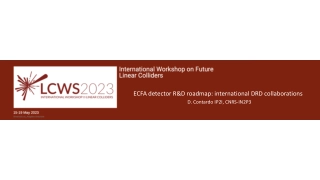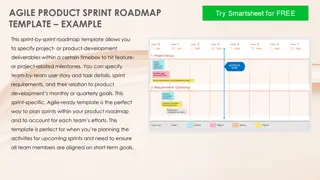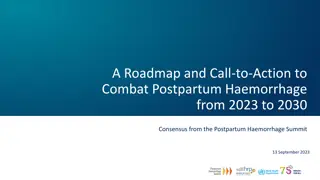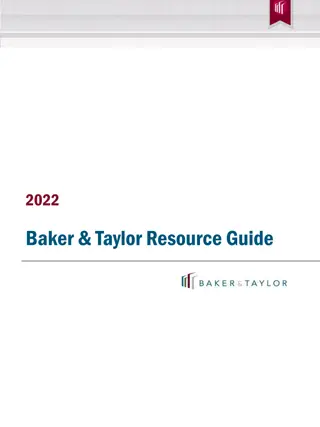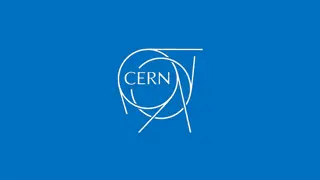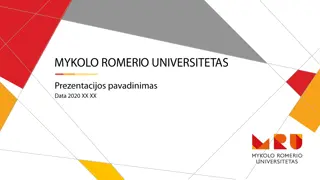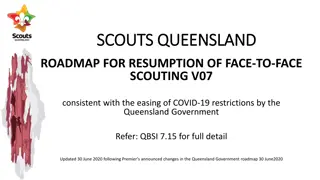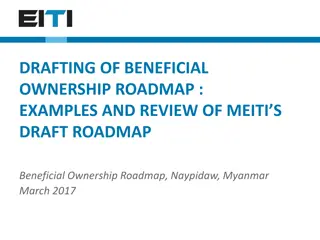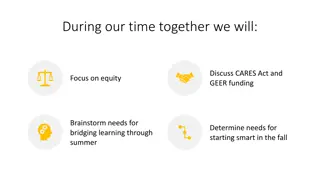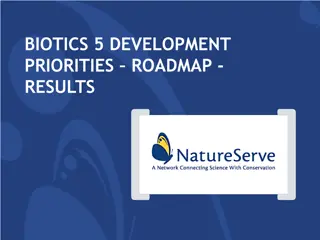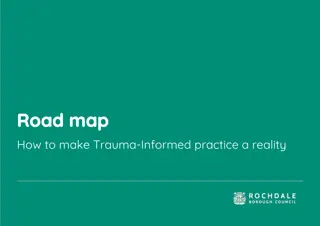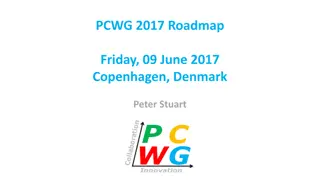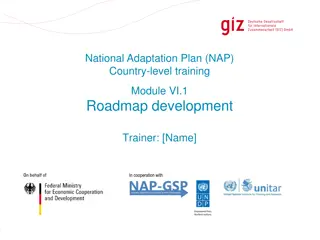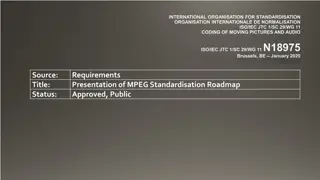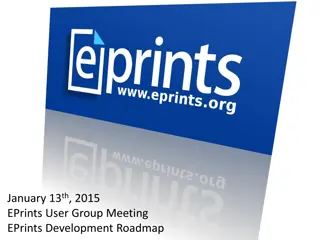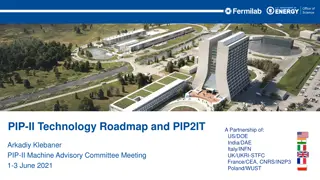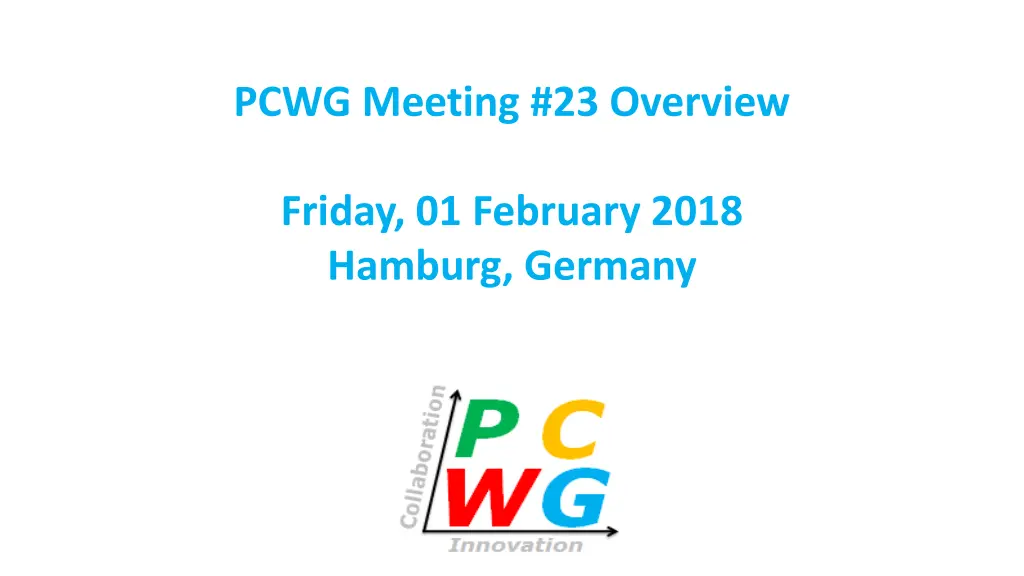
Insights from PCWG Meeting #23: Wind Turbine Performance and Roadmap Update in Hamburg
Discover the latest updates on wind turbine performance, roadmap discussions, and industry consensus building from the PCWG Meeting #23 held in Hamburg. Topics covered include power curve adjustments, REWS and TI correction implementations, turbine performance practice updates, and more. Stay informed on the advancements shaping the wind energy sector.
Uploaded on | 0 Views
Download Presentation

Please find below an Image/Link to download the presentation.
The content on the website is provided AS IS for your information and personal use only. It may not be sold, licensed, or shared on other websites without obtaining consent from the author. If you encounter any issues during the download, it is possible that the publisher has removed the file from their server.
You are allowed to download the files provided on this website for personal or commercial use, subject to the condition that they are used lawfully. All files are the property of their respective owners.
The content on the website is provided AS IS for your information and personal use only. It may not be sold, licensed, or shared on other websites without obtaining consent from the author.
E N D
Presentation Transcript
PCWG Meeting #23 Overview Friday, 01 February 2018 Hamburg, Germany
Agenda PCWG Vision and Mission 2018 Roadmap Update
13.30-14.30 Afternoon Presentation Session New approached to power curve adjustments in WakeBlaster Philip Bradstock (ProPlanEn) Different implementations of REWS and TI correction Samuel Davoust (GE) Turbine performance practice and theory updates from the leading edge Carl Ostridge (DNV GL) Calibrate to Power Concept , Peter Stuart (RES). 09.30 - 09.50 Introduction 09.30 - 09.40 Welcome, Demetrios Zigras, Nordex 09.40 - 09.50: Meeting Overview, Taylor Geer (DNV GL) 09.50 - 10.30: PCWG Activities/Roadmap Update: presentation of 2018 PCWG roadmap, Taylor Geer (DNV GL). 10.30 - 11.15: PCWG-Share-3 (Intelligence Sharing Initiative) Update, Peter Stuart (RES): Update on analytical testing & implications for PCWG-Share-2 results. Beta Testing & User Guide Update (Paul Housley SSE). Preview of PCWG-Share-3. Opportunity for "Enhanced Sharing". 14.30 - 14.45: Coffee Break Afternoon Discussion/Break Out Session: 14.45-16:15 RSVP questions results Breakout: Ideas generation (in groups) Initial re-group discussion Effort vs Impact prioritisation (in groups) Final Regroup discussion 11.15 - 11.30: Coffee Break 11.30 - 12.30: PCWG contribution to IEC 61400-15 discussion and planning Taylor Geer (DNV GL). Lunch: 12.30 13.30 Wrap Up & Next Meetings (16.15 16.45): Virtual meeting for Share 3 results Share 4 US meeting 2nd European meeting
PCWG Structure Person Org Type Coordinator Taylor Geer Andy Clifton Inaki Lezaun DNV GL WindFors Gamesa Consultant Academic OEM Vice-Coordinator Paul Housley Jason Dubois Peter Stuart Jason Fields Matt Colls Richard WhitingEveroze Dan Bernadette UL AWST SSE EDF RES NREL Prevailing Developer Developer Developer Academic Consultant Consultant Consultant Organisational Committee Tool Tool Beta Testing Subgroup Machine Learning Subgroup Development Subgroup Members
Agenda PCWG Vision and Mission 2018 Roadmap Update
Weve Always Known that Real World Wind Turbine Performance is NOT as Simple as Power=P(v, )! Extract from C.J. Christensen et al: Accuracy of power curve measurements , Ris -M-2632, 1986... The power curve is then seen as the relation between the power P(v) produced by this undisturbed wind v. = Air Density P=P(v, ) Power (P) This definition is, however, of very doubtful value for a windmill in the natural wind. The main difficulty is that it assumes a smooth laminar flow of high degree of homogeneity and symmetry Wind Speed (v) The PCWG aims to build industry consensus on how best to predict real world turbine performance and look beyond P=P(v, ). www.pcwg.org.
Reflecting the Real World: Inner-Outer Range Decomposition Categories of Turbine Performance Corrections PCWG Activities Inner Range Performance Adjustments to reflect the fact that even under warranted/ideal conditions performance may not be 100% Outer Range Inner Range Outer Range Performance Adjustments to reflect the fact that turbine performance may deviate from Inner Range behaviour in Outer Range Conditions e.g. Low/High TI, Low/High Shear etc. Note: The PCWG Inner-Outer Range Proposal is Conceptual Decomposition, and does infer specific parameter ranges. + Other Performance Corrections Icing, Blade Degradation, Sub-optimal performance etc.
Reflecting the Real World: Average-Specific Decomposition Categories of Turbine Performance Corrections PCWG Activities Average Performance (Bulk) Adjustments to reflect the fact that on average (in all conditions) turbines may not meet their documented performance level Remove Bias Conditions Specific Performance Adjustments to reflect the fact that turbine performance may deviate from average performance in non-average Conditions e.g. Low/High TI, Low/High Shear etc. Remove Uncertainty Improve Project Design Reduced: /MWh $/MWh /MWh + Other Performance Corrections Icing, Blade Degradation, Sub-optimal performance etc.
Classification of PCWG Activities by Component Note: whilst the two decompositions are subtly different, they are broadly compatible with respect to the roadmap e.g. actions to further Inner Range understanding, will generally further Average Performance understanding. The type of PCWG activates differs strongly depending on the problem component The PCWG is seeking to define an assessment framework to define how to make best use of historic power performance tests when predicting future inner/average performance. Inner Range Performance Average Performance The PCWG is attempting to evaluate quantitative methods for predicting Outer/ Specific performance Intelligence Sharing Initiative (PCWG-Share-X) Outer Range Performance via the PCWG Conditions Specific Performance
Reflecting the Real World: Inner Range / Average Performance Extract from High Resolution Turbine-Specific Matrix , Carl Ostridge DNV GL, Colorado PCWG Meeting, 10 August 2016, download from www.pcwg.org.
Reflecting the Real World: Outer Range Performance Outer Range Deviations (Observed Base) Inner Range Performance Turbulence Intensity [%] Colour = % Observed Power Deviation (Observed - Base) High TI & High V Negative Deviation Low TI & Low V Negative Deviation Power (P) High TI & Low V Positive Deviation P=P(v, ) Wind Speed (v) Wind Speed [m/s]
Agenda PCWG Vision and Mission 2018 Roadmap Update
PCWG 2018 Roadmap Roadmap Page 1/4 OUTCOME 1. Inner/Average Performance Evidence Pathway for Inner/Average Performance Reduced Investor Risk Define best practice guidelines for stakeholder data exchange and analysis to establish inner/average performance 2. Outer/Specific Performance 50% reduction in outer/specific modelling uncertainty, contribute to IEC 61400-15 Reduced Investor Risk Objectively determine/refine the best methods for modelling outer/specific performance using the PCWG-Share-X Platform 3. Enabling Activities The right tools & industry understanding to deliver items 1 & 2 Publically available worked Examples PCWG Analysis Tool Development End of 2018 NOW
PCWG 2018 Roadmap Roadmap Page 2/4 1. Inner/Average Performance Define best practice guidelines for stakeholder data exchange and analysis to establish inner/average performance (based on real world industry practice) 2018 - Timeline Draft Guidelines Document (based on a overhaul of existing DRAFT guidelines for preparation of a turbine information pack document). Aug Feedback Sep Updated Draft Document Oct Final Feedback Nov Dec Publication on PCWG Website
Roadmap Page 3/4 Measuring Progress 2. Outer/Specific Performance 2018 - Timeline PCWG-Share-3 Feb Jun PCWG-Share-4 Provide input to IEC 61400-15 Sep
PCWG 2018 Roadmap Roadmap Page 4/4 3. Enabling Activities Publically Available Worked Examples Further Worked Examples to support PCWG-Share-X and ensure numeric integrity. Avoid further work examples & round robins not directly related to PCWG-Share-X (focus and bandwidth) PCWG Analysis Tool Development Implementation of New Methods Improved Testing and worked examples Improved Beta Testing (Beta Testing Sub Group) Led by Paul Housley (SSE) Improved Documentation (Beta Testing Sub Group) - Available for PCWG-Share-3 Machine Learning Sub-group meetings and discussions Creation of Machine Learning Web Service for PCWG-Share-4 Publish Summary of PCWG Activities & Outcomes (on PCWG Website)
Summary 1. Focus activities of group: Don t try and do too much. Focus on delivering tangible input to IEC 61400-15 (by Q3) 2. PCWG-Share-X Leverage PCWG-Share-X to achieve 1) Implement lessons learnt and ensure tool is comprehensively numerically and usability tested prior to start each sharing iteration (don t rush!) 3. Best practice guidelines Distil best of current industry practice

